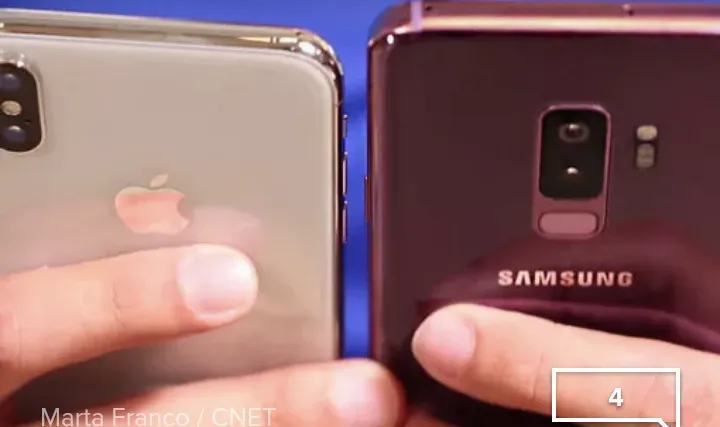
If you're not interested in payment plans and price is the deciding factor, then read no further than this paragraph. The cheapest iPhone X will cost you US$999 (£999, AU$1,579). Expect to spend less on the S9 and you get two price points to choose from. Prices vary from carrier to carrier, they run for about US$720 (£739, AU$1,199) and US$840 for the 64GB version.
Android Oreo 8.0 vs iOS 11 is pretty much like comparing Apples to oranges (ahem!), but switching from either is a big deal. If you have deep ties to one or the other, this might be another easy deal-breaker.
Both phones are glass on glass with metal frames and barely-there bezels. The S9s have curved edges and screens that appear to spill over the sides. The bezels on the iPhone X are slimmer top to bottom, but you get the intrusive notch at the top. The iPhone comes in monochromatic Space Grey and Silver, while the S9 comes in Midnight Black, Coral Blue, Lilac Purple and Titanium Grey.
The iPhone X's is the same size as the 5.8-inch screen on the S9 (minus the notch), while the S9 Plus has a larger 6.2 inch screen. All three are OLED displays, but the S9's have slightly higher resolution and pixel density (2,960x1,440 pixel 529ppi and 570ppi) than the Super HD Retina Display on the iPhone X (2436X1125-pixel 458 ppi). The iPhone X however has TrueTone technology that adjusts the color temperature of the screen relative to the type of ambient light, so that colors look accurate no matter what the lighting condition.
This one's a clear win for Samsung. It actually has a headphone jack. The iPhone X does not. The X requires you to use a dongle for traditional headphones, use Apple's Lightning port headphones or you can use the Bluetooth option on both phones.
The iPhone X has stereo speakers on the bottom of the phone and on the earpiece. The S9 and S9 Plus are the first Galaxy phones to also get stereo speakers. They're tuned by AKG and have a Dolby Atmos codec which, according to Samsung translates into richer louder sound, but this one is TBD until we can listen to them both side by side outside of a demo room.
Neither phone has a scanner on the screen like the Vivo Phone concept, but the S9s kept the fingerprint scanner on the back of the phone like their predecessors for mobile payments and unlocking your phone. Except this time it's in a better position: Below the camera instead of beside it like on the S8. To unlock the iPhone X or to verify a payment, you'll have to use the FaceID feature or a passcode.